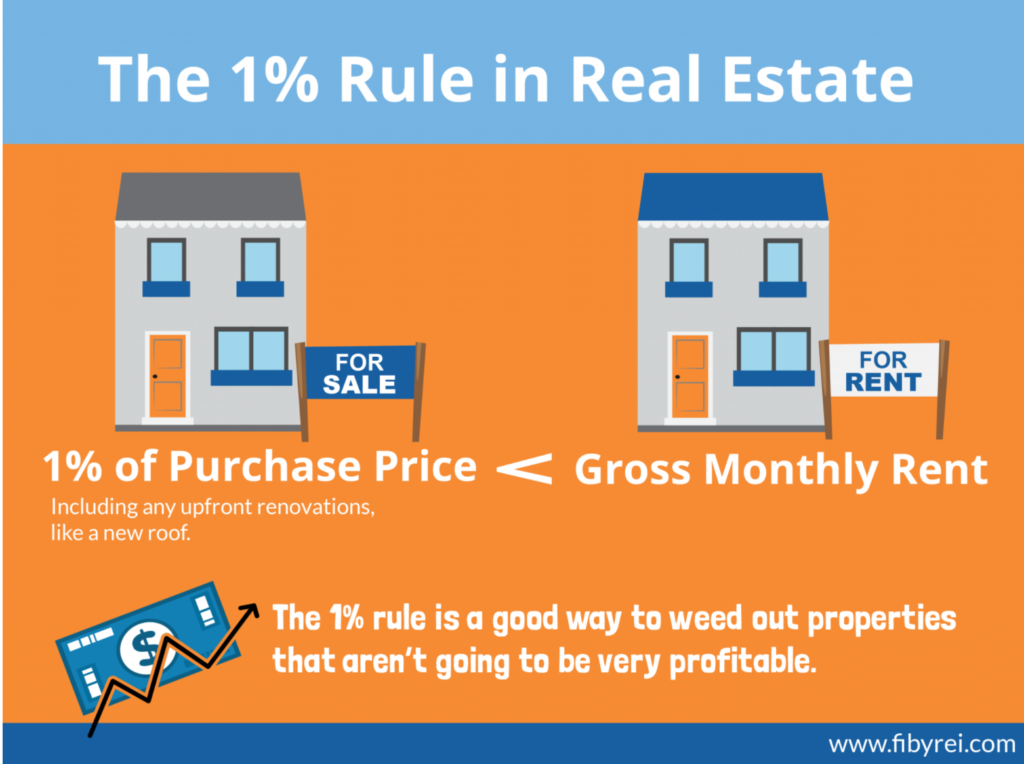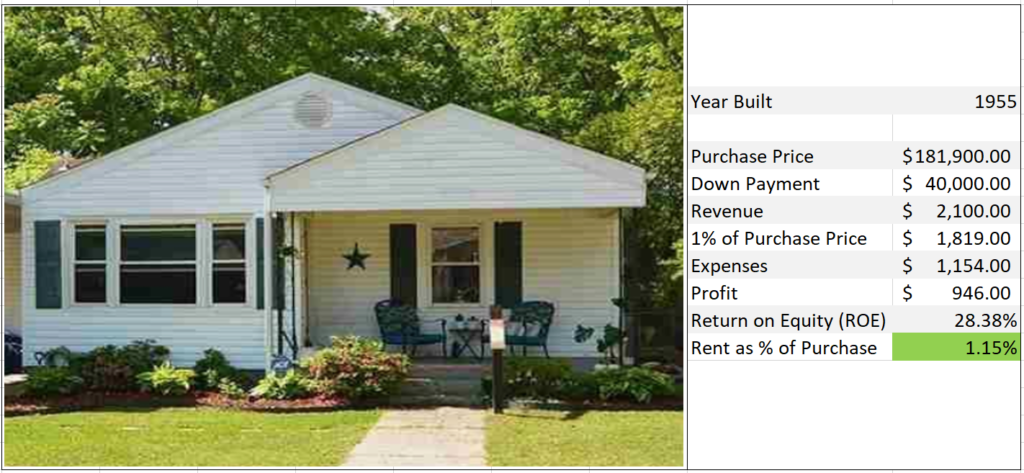The 1% Rule has fallen out of favor with many real estate investors. It’s been labeled as old school, irrelevant, and impossible…in short, there are some who believe the old rule of thumb has outlived its useful life. In this blog post, we’re going to explore and define the rule and if it exists, why it’s important, where it works, and the types of properties it will work on.
Fact or Fiction:
So let’s get to it. First off, yes the 1% Rule exists, but will it will apply to your market and portfolio? It depends. The 1% Rule is a back of the envelope approach of evaluating whether a potential investment will generate sufficient returns to justify the capital, risk, and expenses of buying an investment property. Using this metric, an investor would consider a property for their portfolio if the monthly revenue is equal to or greater than 1% of the purchase price of the property. There are more sophisticated methods that involve forecasting the free cash flow (FCF) for various properties and comparing them based on net present value (NPV), with assumed occupancy rates and expenses. However, the 1% Rule will give you a quick snapshot of whether the property is even worth taking a look at. In short, take the potential monthly rental revenue, divide it by the purchase price of the potential property and multiply it by 100; if the resultant number is 1 or greater, the property meets the 1% rule and will generates a sufficient return on the equity investment.
Why It’s Important:
The math behind the 1% Rule is easy – some simple division and multiplication – but the meaning behind the resultant number is a powerful indicator of the potential success of a rental property and the return on your investment (asset value), see below. Although it doesn’t use fancy MBA math using discounted cash flows, it’s actually a close relative of a “Capitalization (CAP) Rate,” which is the metric used internationally to evaluate and value Class A, B, and C commercial real estate, and during associated transactions. CAP Rate uses the annual net operating income (profit) from a commercial real estate property, divided by the market value of a property, and multiplied by 100. Of note, CAP Rates are typically higher in lower income markets (Class B/C Properties) and generally lower in higher income markets (Class A Properties). Pursuing a high or low CAP Rate depends on the type of ROI you’re searching for. A high CAP Rate RV park may generate a high cash flow per month, but have limited asset appreciation; alternatively, a low CAP Rate Class A Building in LA may have lower cash flow but exponential long-term appreciation potential. The 1% Rule uses this same premise (and the same math), but is scaled monthly and based on revenue versus profit. High-end, luxury SFR rental properties may not beat the 1% Rule, but they will likely have more of an opportunity for long-term appreciation. So, depending on your goal, the 1% Rule may or may not apply or be a useful indicator. You may find an off-market, luxury home for below market value that doesn’t meet the 1% Rule, but may be useful to cash-out refinance for additional liquidity or to hold and sell for a strong capital gain. I don’t always use the 1% Rule as a hard-and-fast-rule, but will generally search for properties close to this return, even in higher-end markets. See below for a discussion on type of properties and markets where the 1% Rule works.

Where It Works / Types of Properties:
The 1% Rule will work in similar markets and property classes that are defined by high CAP Rates, but applies to residential, vice commercial, properties. Older homes, in lower income areas, with lower valuations are more likely to meet and beat the 1% Rule. This isn’t universally true regarding the 1% Rule, and there are plenty of examples of newer homes in high-income areas that beat the 1% Rule. However, as a general rule, older construction in established neighborhoods are good starting points when searching for property that beats the 1% Rule. The below property details are taken from a recent real estate transaction:
